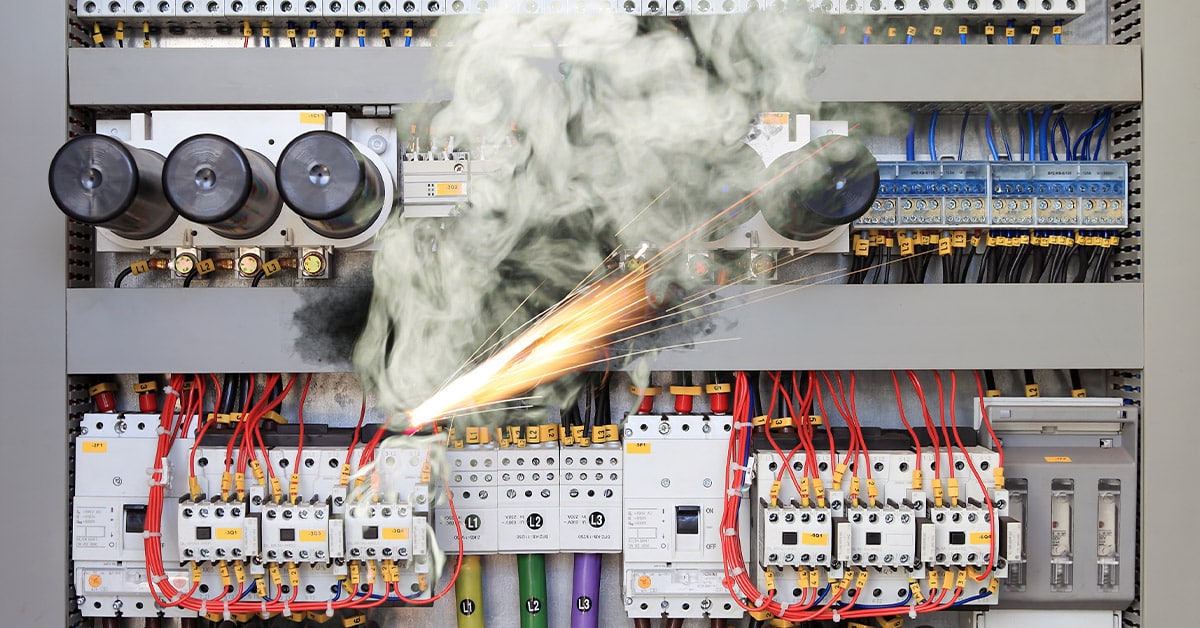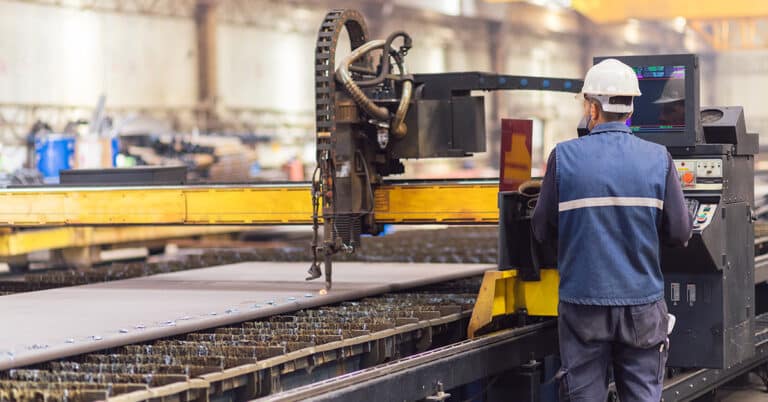There’s always a risk of sudden and unexpected failures, even with an effective preventive maintenance strategy in place. An emergency maintenance strategy ensures the team knows what to do when this kind of thing happens. This blog answers the questions, “What is emergency maintenance and what’s involved in planning for it?”
What is emergency maintenance?
Emergency maintenance is the work done when an unexpected breakdown or failure creates an immediate risk to people, the environment or the business. It’s a form of reactive maintenance but one where delays must be minimized because, without mitigation, impacts and costs will escalate rapidly.
In a manufacturing environment, examples of emergency maintenance include:
- Getting an air compressor running again when there is no backup and production is stopped
- Shutting off flow to a storage or processing tank when a valve has failed and a toxic spill is imminent
- Preventing a flood from reaching an electrical cabinet
Not every breakdown is an emergency. Making this determination is one of the first steps in the emergency management process workflow.
Emergency maintenance workflow
The maintenance team should follow a defined process for handling reports of a problem requiring an emergency response. The workflow is:
- Detection and notification: This usually comes in by phone call or through instrumentation installed on equipment or in a process.
- Assessment and planning: Ask questions to determine the scale and impact of the event. The answers will determine whether it is a true emergency requiring an immediate response, or if raising a High Priority Work Order will be sufficient.
- Mobilization of resources: Determine who should be dispatched, what equipment they will need and who should be notified. (A toxic chemical release will mean notifying local authorities of the problem.)
- Implementation of repairs: Take mitigation actions, then determine the longer term work needed. Raise work orders accordingly.
- Testing and validation: For both the mitigating actions and the longer term repairs, verify what’s been done has eliminated the risks and, ideally, resolved the problem.
- Documentation and review: The event must be recorded within the CMMS and analyzed to determine how to prevent a repeat. For example, existing preventive maintenance work and schedules may need modifying.
Types of emergency maintenance
Emergency industrial maintenance is requested in response to an identified or suspected problem such as a major equipment failure. In this sense it is a form of reactive maintenance and so something businesses and maintenance teams strive to avoid.
Emergency maintenance is often requested by someone present at the scene. Perhaps they saw a piece of equipment get damaged, saw smoke or heard a concerning noise. It may, however, be requested or even initiated automatically by the process equipment.
Many machines and devices are able to send alerts when a breakdown has occurred. Particularly in process or food and beverage plants, this will trigger a message or signal of some form in a control room. More sophisticated systems are sometimes able to take actions to minimize the impact of the problem. This could take the form of releasing excess pressure or diverting an overflow into a bunded area or pond.
Common examples of emergency maintenance situations include:
- Power outages
- Equipment failures
- Leaks and spills
- Structural failures
- Fire and explosions
Risk assessment and prioritization
On being notified of an event, seen or suspected, the first step in the workflow is to determine the speed of response required. An event is clearly an emergency when lives are at risk, however, an industrial accident such as a burn or trapped finger, while distressing for those involved, may not need immediate maintenance action. (Attending to guarding may however be a high priority.)
Another type of emergency is where there is a real threat to the environment. A chemical spill running into a drain is an example and one that needs a rapid response.
Less obvious emergencies are those that affect production. Here, the immediate response should be to get more information regarding the scale of the impact. Something that shuts down an entire site, such as an electrical outage or air compressor failure, probably qualifies as an emergency, but an individual machine breakdown is unlikely to qualify.
Training and preparation
There’s no way to know when emergency industrial maintenance will be needed, but it is possible to prepare. Key elements are:
- Perform an assessment of things that could happen.
- Develop appropriate response plans; for example, a chemical spill will need a different response to an electrical fire in a control cabinet.
- Identify who should be trained to respond to each type of situation, and ensure they receive appropriate training.
With plans developed and shared, drills and simulations help reinforce the behaviors needed and identify opportunities for improvement. Emergency response plans should be reviewed periodically, especially when significant changes are made within the facility, to ensure they remain accurate and appropriate.
Analysis and continuous improvement
An event or situation requiring emergency maintenance is also an opportunity to improve the maintenance work being performed. Once the problem has been resolved, a review should be undertaken to establish the root cause and to determine the changes necessary to prevent recurrence.
An important aspect of this review is to gather information from those with detailed knowledge of the area, equipment and working practices (which may differ from the documented Standard Operating Procedures).
One outcome of the review will probably be to modify or implement new preventive maintenance schedules, perhaps adjusting inspection frequencies or adding more checks.
While this is an important step, the opportunity should also be taken to explore predictive maintenance solutions. This is where equipment is instrumented with sensors that monitor various aspects of machine health. Temperature and vibration are two of those most often measured. This data is then analyzed to observe trends and make predictions about impending failures, so ensuring maintenance is only performed when needed.
Dealing with the unexpected
Unexpected failures and breakdowns can put people, equipment and the environment at risk, or they may just be inconvenient and expensive. To deal with the former, it’s important to prepare for emergency maintenance. This entails determining an appropriate workflow and developing procedures for rapid mitigation.
Once the crisis is over, it’s time to work out how to prevent a recurrence. That usually means revising the preventive maintenance program, but can also be an opportunity to implement some form of machine health monitoring.
As the leader in outsourced maintenance services, ATS helps manufacturers across a range of industries to improve how they care for their assets. From workforce training and MRO support to machine health assessments and lubrication services, we can provide the services needed. Contact us for details.






